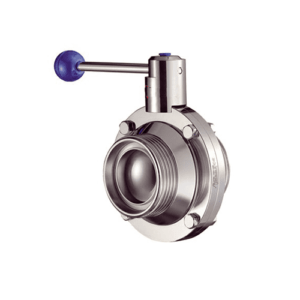One area critical to the design of a flange is the face, as it plays a major role in determining the effectiveness of the seal of a flange joint. The selection of a flange face is decided by the operational parameters like pressure, temperature, and maintenance. This paper gives an overview of various types of flange faces including: Flat Face (FF), Raised Face (RF), Ring Type Joint (RTJ), Tongue and Groove (T&G) and Male and Female (M&F), their characteristics, merits, demerits and application.
Flat Face (FF) Flange
As the name denotes, Flat Face (FF) flanges are aesthetically designed to have a flat surface and are hence used in conjunction with flat-faced counter flanges. This design is meant to be used with cast iron equipment, valves, or fiberglass piping systems in which the assembly of these elements would otherwise be prone to deformation and cracking. FF flanges utilize full-face gaskets to seal throughout the-seal entire face area.
There are many advantages attributable to the FF flanges. Due to their lack of complexity and a flat surface, the alignment of the flanges is made quite easy during installation which can be of particular use in low-temperature and low-pressure conditions. Additionally, the configuration decreases the chance of the flanges warping or cracking due to the bolt pressure. On the other hand, the flanges cannot be used in places where there is a high pressure as they do not provide a proper seal. Considering that proper alignment is also necessary for leak proofing, this could also be a downside in certain situations.
FF flanges are used commonly in less critical components in the system such as low-pressure water line pipes as well as a number of other cases where the seal is not that important.
Raised Face (RF) Flange
Raised Face (RF) flanges consist of a very small elevation around the bore that seats the gasket. The face thickness of a raised flange is dependent upon the flanges pressure class. For example, most of them in the 150# and 300# pressure class tend to have it at 1/16 inches while the 400 pressure classes and more have it increased to 1/4 inches. Gaskets used on RF flanges include spiral wound or cam profile gaskets.
The raised portion on the RF flange increases the level of sealing thus enhancing its acceptable range on working conditions of temperature and pressure. The design makes provision for the gasket to be able to compress and seal efficiently. However, RF flanges are more costly because of the extra machining operations and require great caution to be taken regarding their alignment prior to sealing.
RF flanges are widely used in high pressure and high temperature environments like oil and gas industry, petrochemical and chemical processing industries.
Ring Type Joint (RTJ) Flange
RTJ flanges are intended for high-pressure and high-temperature applications and as such have a machined recess on the face of the flange where a metallic ring gasket is located. This design promotes metal to metal bonding resulting in the high performance of a gasket seal and thereby reduces the chances for a blowout or a leakage.
RTJ flanges are used for offshore well heads, subsea pipelines, oil and gas applications and many other high-pressure systems that need leak-proof enforcements. However, these require very fine machinery and special gaskets, which increases the cost and also the installation complexity involved.
RTJ flanges, however, require very robust alignment mechanisms in order to prevent them from getting misaligned. They are routinely used in pipes and applications which leakage is not an option.
Tongue and Groove Flange
Tongue and Groove flange has a raised area (called tongue) on one side of flange and a recessed area (called groove) opposite to it on the other side. The advantage of this is that the two surfaces, when assembled, are able to locate themselves at a particular position and hence it reinforces the gasket and improves the sealing of the joint. Gaskets are normally placed in the groove so that they are shielded from the surrounding atmosphere.
T&G flanges are appreciated for their feature of self-alignment which greatly eases installations and reduces the probability of the gasket being knocked off position at the time of assembly. They are applicable in cases where the pressure is moderate or greater, like steam and water systems, which require tight seals. However, the disadvantage of T&G flanges is that due to their construction being rather complex it increases the cost and that the flange pairs must be matched for the installation.
Male and Female Flange
Male and Female flanges are like the degenerative pair with one face consisting of a raised portion which is referred to as a male and the other face which is recessed referred to as female. This mechanical feature makes its assembly much easier and tight fit between the two flanges rings and there is increase in leakage prevention, especially when used soft iron gaskets or metallic gaskets that would be somewhat crushed on close fitting gaskets.
M&F flanges are ideal for moderate to high pressures, they find use in sea piping systems and specialized apparatus like heat exchangers in the oil and gas sectors. The installation of the flanges coupling processes requires maintenance of exact alignment in order to have a good seal achieved, however, they do not integrate well with standard ones.
Conclusion
It is fundamental to be aware of the differences in the geometry of the flange faces- these comprise; male and female, tongue and groove, ring type joint, flat face and raised face when selecting for a specific application. Each type has its own merits and demerits which makes it applicable under certain operational conditions and not other. The stakeholders in the industry must also understand that factors such as pressure, temperature, alignment, and cost contribute cutting performance and sealing effectiveness of piping systems.










